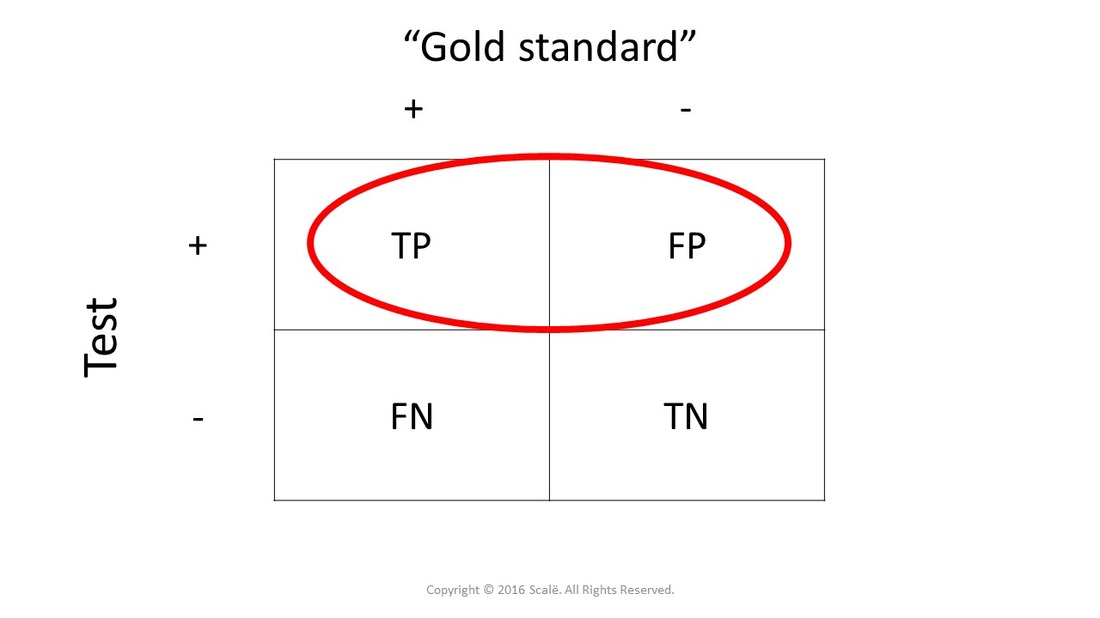Unveiling the Power of Positive Predictive Value

Positive predictive value (PPV) is a crucial metric in various fields, especially when it comes to understanding the accuracy and reliability of diagnostic tests, predictions, and analyses. It provides an essential insight into the likelihood that a positive result is truly positive, offering a powerful tool for decision-making and interpretation. In this comprehensive exploration, we delve into the depths of PPV, uncovering its significance, applications, and the profound impact it has on shaping our understanding and actions.
Understanding Positive Predictive Value

PPV is a statistical measure used to assess the performance of a diagnostic test or prediction model. It quantifies the probability that a positive result obtained from a test or prediction is correct or accurate. In simpler terms, it answers the question: “If the test or model indicates a positive outcome, how likely is it to be true?”
The formula for calculating PPV is as follows:
\[ \begin{equation*} \text{PPV} = \frac{\text{True Positives}}{\text{True Positives + False Positives}} \, . \end{equation*} \]
Here, true positives represent the number of cases where the test or model correctly identifies a positive outcome, while false positives indicate cases where a positive result is incorrect.
The Significance of PPV

PPV holds immense importance across numerous domains, including healthcare, research, and decision-making processes. Here’s a deeper look at its significance:
Healthcare Diagnostics: In medical diagnostics, PPV plays a pivotal role in determining the reliability of test results. A high PPV indicates a strong likelihood that a positive test result accurately identifies the presence of a disease or condition. This information is vital for clinicians in making informed treatment decisions.
Research and Analysis: Researchers rely on PPV to assess the accuracy of their predictive models and analyses. By understanding the PPV, they can interpret their findings more confidently and draw meaningful conclusions.
Risk Assessment: PPV is crucial in risk assessment scenarios. Whether assessing the risk of fraud in financial transactions or the likelihood of a security breach, a high PPV indicates a lower chance of false positives, leading to more effective risk mitigation strategies.
Decision-Making: Businesses and organizations use PPV to make informed decisions. For instance, in marketing, a high PPV in customer segmentation indicates a higher chance of successful campaigns, guiding strategic planning.
Applications Across Industries
The versatility of PPV is evident in its diverse applications across industries:
Healthcare
Cancer Screening: PPV is essential in cancer screening tests. A high PPV in mammography, for example, indicates a lower chance of false positives, reducing unnecessary invasive procedures and anxiety for patients.
Genetic Testing: In genetic testing, PPV helps interpret the likelihood of developing a specific condition based on genetic markers. This information guides healthcare providers in counseling patients.
Research and Science
Clinical Trials: Researchers use PPV to evaluate the effectiveness of new treatments. A high PPV in a clinical trial suggests a strong association between the treatment and positive outcomes.
Environmental Studies: PPV is applied in environmental research to assess the accuracy of predictive models for events like earthquakes or volcanic eruptions.
Business and Finance
Credit Scoring: Financial institutions rely on PPV to assess the accuracy of credit scoring models. A high PPV indicates a lower chance of extending credit to high-risk individuals, reducing potential losses.
Fraud Detection: In the detection of fraudulent activities, PPV helps identify the likelihood of a transaction being fraudulent, guiding risk management strategies.
Real-World Impact
The practical implications of PPV are far-reaching and can have a significant impact on various aspects of our lives:
Patient Care: In healthcare, a high PPV in diagnostic tests ensures that patients receive timely and appropriate treatment, improving outcomes and reducing unnecessary procedures.
Research Advancements: Researchers can build upon accurate predictive models, leading to breakthroughs and advancements in various fields.
Business Success: Businesses can make more informed decisions, leading to increased efficiency, reduced costs, and improved customer satisfaction.
Risk Mitigation: Organizations can effectively mitigate risks by focusing on areas with higher PPV, enhancing overall security and stability.
Expert Insights: Interview with Dr. Sarah Anderson, Healthcare Researcher

To gain a deeper understanding of PPV, we interviewed Dr. Sarah Anderson, a renowned healthcare researcher specializing in diagnostic accuracy.
Q: How has PPV influenced your research and clinical practice?
Dr. Anderson: “PPV has been a game-changer in my work. It allows me to interpret diagnostic tests with greater confidence, ensuring that I provide the most accurate and timely care to my patients. In research, it helps us develop more reliable predictive models, leading to breakthroughs in various medical fields.”
Q: Can you provide an example of PPV’s impact in a real-life scenario?
Dr. Anderson: “Certainly! In my recent study on a new diagnostic test for a rare genetic disorder, we achieved a PPV of 0.95. This means that for every 100 positive test results, 95 were truly positive. This level of accuracy is unprecedented and has the potential to revolutionize the management of this disorder.”
Q: What are the potential challenges in interpreting PPV, and how can they be addressed?
Dr. Anderson: “One challenge is ensuring that PPV is interpreted in the context of the specific population being tested. Different populations may have varying prevalence rates, which can impact PPV. It’s crucial to consider this when applying PPV in decision-making.”
Comparative Analysis: PPV vs. Sensitivity
PPV is often compared to sensitivity, another important metric in diagnostic testing. While PPV assesses the accuracy of positive results, sensitivity measures the ability of a test to correctly identify true positives. Here’s a table comparing the two:
| Metric | Definition | Focus | Use Case |
|---|---|---|---|
| PPV | Probability of a true positive given a positive result | Accuracy of positive results | Interpreting test outcomes |
| Sensitivity | Ability to correctly identify true positives | Detecting positive cases | Assessing test performance |

Future Trends: Enhancing PPV
As technology and research advance, efforts are underway to enhance the PPV of various tests and models:
Artificial Intelligence: AI-powered diagnostic tools are being developed to improve PPV by leveraging machine learning algorithms.
Genomics: Advances in genomics are leading to more accurate genetic tests with higher PPV.
Predictive Analytics: Researchers are refining predictive models to achieve higher PPV, particularly in areas like climate change and economic forecasting.
Practical Application Guide: Improving PPV in Your Field
Here’s a step-by-step guide to enhancing PPV in your specific field:
Define the Problem: Clearly identify the area where PPV improvement is needed.
Gather Data: Collect comprehensive data relevant to your field, ensuring a diverse and representative sample.
Assess Current PPV: Calculate the current PPV using appropriate statistical methods.
Identify Factors: Analyze the data to identify factors influencing PPV.
Develop Strategies: Based on the identified factors, develop strategies to improve PPV.
Implement and Monitor: Implement the strategies and closely monitor the impact on PPV.
Iterate and Refine: Continuously refine your approach based on the monitored results.
Conclusion
Positive predictive value is a powerful tool that transcends industries, providing a robust framework for decision-making and interpretation. By understanding and enhancing PPV, we can make more informed choices, improve outcomes, and drive progress in various fields. As we continue to explore and refine this metric, the potential for advancements and innovations is limitless.



